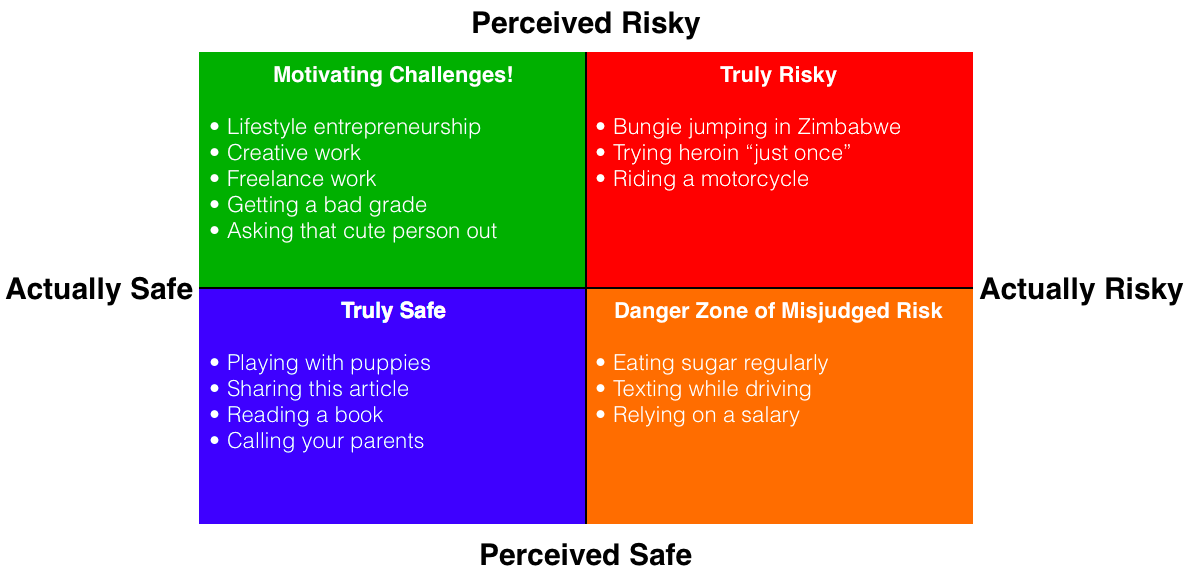Is it Risky? Or Challenging?

My uncle Steve pointed this out in response to my last article on rethinking risk and I thought it was such an important distinction that it needed it’s own article.
Here’s Steve:
“We used to talk a lot about challenges vs risks. A lot of people mistake one for the other and do something risky when they mean to do something challenging. Jumping off a roof to show off is risky but not challenging. Climbing Half Dome with proper equipment is challenging, but should not be risky.”
From the last article, we know that we misjudged things as risky because we don’t understand them, or because we have limiting beliefs from our peers and upbringing.
To add to our arsenal of fear mitigation, Steve points out another important distinction: is it risky? Or just challenging?
Say you want to teach yourself design to apply to work at a startup. The first instinct might be “that seems risky because what if I don’t learn enough to get hired?” But you can also frame it as a challenge: “I know that I can learn enough to get hired, it just might be a challenge to figure it out on my own.”
A challenge is motivating. We love challenges, so long as they’re in that learning sweet-spot where we can get into flow and feel good about our progress. Sometimes, when we’re not sure what to do, we label the opportunity as risky because we aren’t sure how to approach the challenge, but if we throw out the notion of “risky” altogether and look at everything as various degrees of challenges, we can completely reframe any problem we’re up against.
We can even remake the chart from the previous article based on this new distinction, where the items that are perceived risky but secretly huge opportunities are simply Motivating Challenges:

And, sure, getting a bad grade isn’t a “motivating challenge,” but it is if you think of it as part of a bigger challenge of taking your education into your own hands.
What this gives us is a simple heuristic for evaluating an opportunity you’re considering but hesitant about.
Are you hesitant because it’s truly risky?
Or are you hesitant because it’s challenging and you don’t know where to start?
I think what you’ll find is that in most cases, it’s simply an unfamiliar challenge. And when that’s the case, all you need to do is break it down until it feels like it’s at the right degree of approachability (using the techniques in the last article) and you’ll be good to go.

